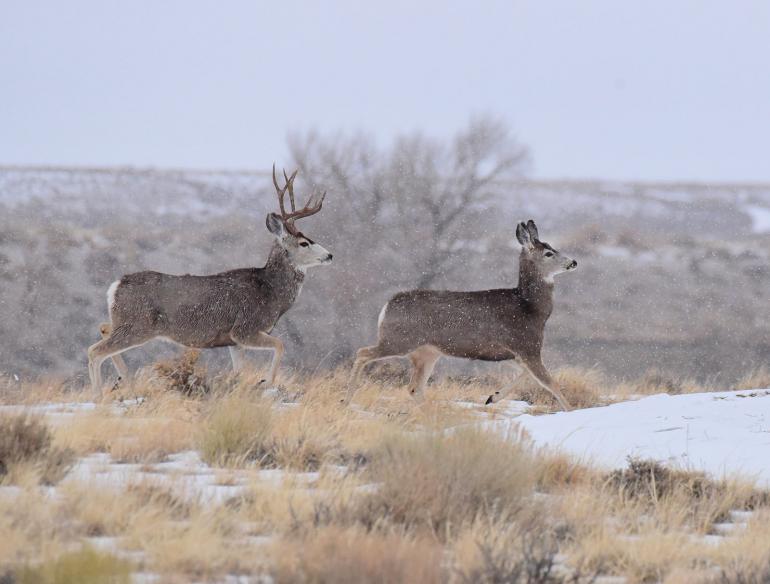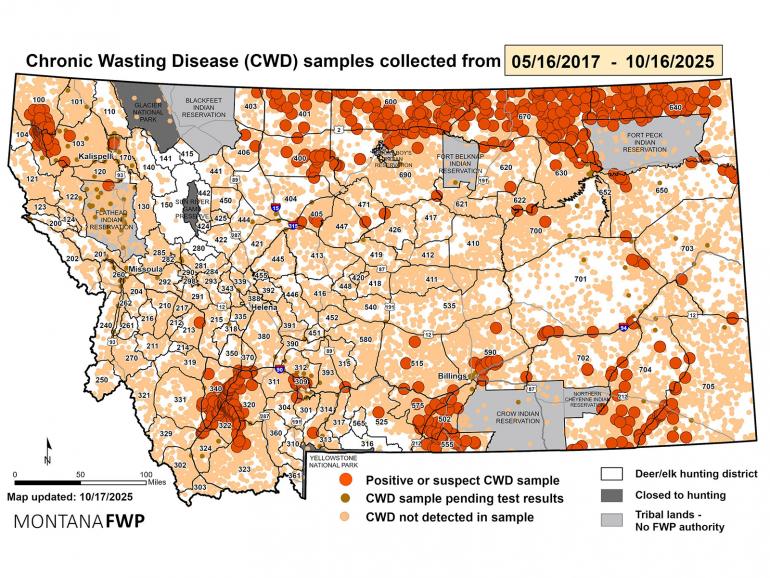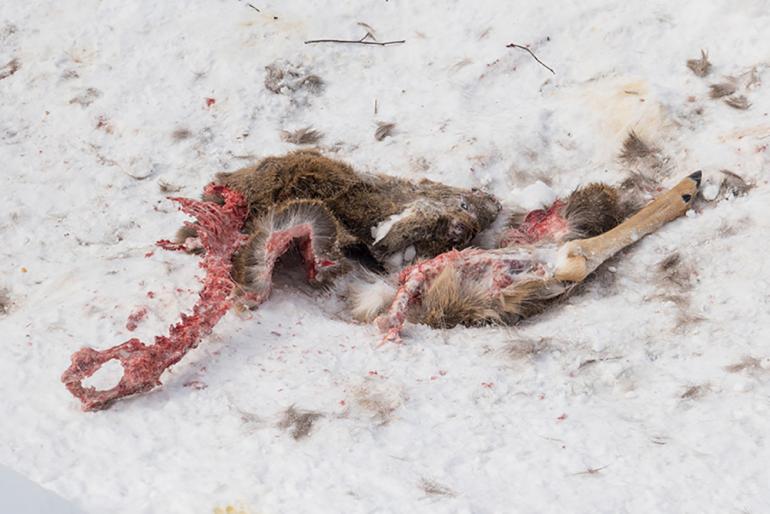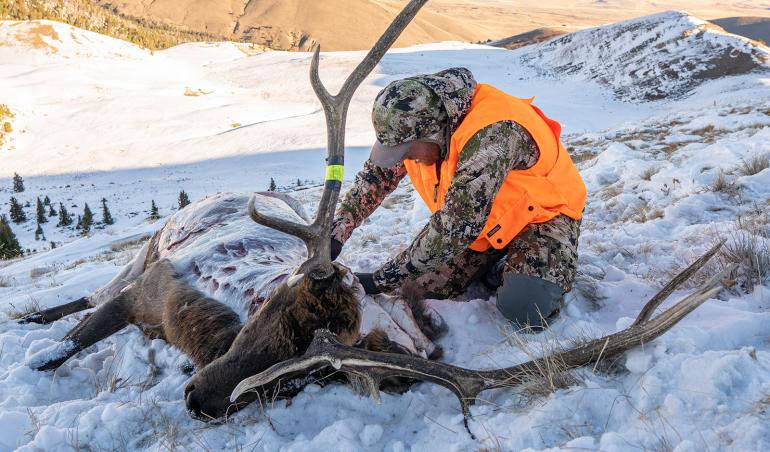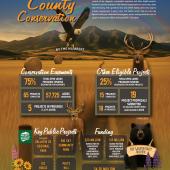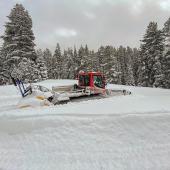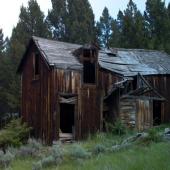Don't Move CWD Around
How following Montana’s big-game carcass-disposal regulations can help contain CWD.
For years, I had a tradition of unknowingly breaking Montana’s game-disposal law. After harvesting a deer, I’d carefully follow state regulations by notching my tag and promptly attaching it to the carcass. Then I’d field dress the animal and pack it in pieces back to my truck.
Once home, after all the meat was butchered and tucked away in my freezer, I’d be left with a pile of bones. Unbeknownst to me, that’s when things went south, legally speaking. Rather than tossing the remains out with our trash, I felt drawn to deposit them in the nearby forest, where they could return back to soil. Our local landfill seemed an unceremonious final resting place for animals I revere in life and seek to honor in death.
Look around the outskirts of any Montana town and you’ll find the “boneyards” where generations of hunters have dumped the remains of deer, elk, and other harvested game. What many don’t realize is that this illegal carcass disposal creates a disease “vector.”
I’ve since learned that what I’d been doing was in fact illegal, and that the best way to dispose of a big-game carcass is to take it to a local garbage-disposal facility. Also known as Class II landfills, these operations bury refuse deep in the soil, which shields it from contact with wild animals.
In 2017, Montana documented its first case of chronic wasting disease (CWD) in free-ranging wildlife after a mule-deer buck south of Billings tested positive. This fatal brain disease can afflict deer, elk, and moose (but, as far as scientists can tell, not humans). Later that same year, CWD cropped up along Montana’s Hi-Line near the Canadian border, and then again a couple of years later near the Ruby River east of Dillon.
CWD could have been inadvertently turned loose by an infected carcass harvested elsewhere that was dumped in the woods.
In 2019, CWD inexplicably leapt 300 miles across Montana’s portion of the Continental Divide to the northwestern Montana town of Libby, where a whitetail doe tested positive inside city limits. Disease experts were stunned. Since then, more than 200 deer and two moose in the Libby area have tested positive for CWD.
The big question: How did CWD suddenly show up hundreds of miles from any other positive detection? According to Dr. Emily Almberg, a disease ecologist with Montana Fish, Wildlife & Parks, it’s likely that no one will ever know for certain how the Libby outbreak started. But one possibility is that an infected deer made a long-distance trip; another is that a hunter brought CWD there from a deer harvested elsewhere. The disease could have been inadvertently turned loose when the infected carcass was dumped in the woods. “We always worry about that scenario,” says Almberg, who works at the FWP wildlife health lab in Bozeman.
FWP requires that the skull, spinal cord, and brain matter of any deer, elk, or moose harvested in Montana be left at the kill site or, if transported for further processing, be disposed of in a Class II landfill once the processing is complete.
Look around the outskirts of any Montana town and you’ll find the “boneyards” where generations of hunters have dumped the remains of deer, elk, and other harvested game. What many don’t realize is that this illegal carcass disposal creates a disease “vector.”
“CWD isn’t anything like your typical bacteria or virus,” says Austin Wieseler, FWP wildlife health biologist. “It’s spread by prions—super-hardy misfolded proteins that remain infectious in the environment for at least two years and likely even longer.”
Live animals with CWD can shed infected prions through feces, saliva, and urine, but the prions also remain infectious in the tissues of dead animals. Prions bind to a variety of surfaces, minerals, and soil types, making CWD diabolically hard to eradicate. The disease can persist in the ground for years and get picked up by deer, elk, or moose if the animals nose around contaminated soil or plants.
Many hunters travel across Montana or to other states to pursue deer, elk, or moose before returning home with a harvested animal. “If you don’t realize it is CWD positive, and then discard the carcass back home where other big game animals can readily come into contact with it, you are increasing the risk factor for transmitting CWD to where you live,” says Morgan Jacobsen, FWP regional Communication and Education Program manager.
If that isn’t reason enough, it’s also illegal under Montana state statutes to place any animal remains on public land not directly at the kill site. Violators are subject to a $500 fine and a loss of hunting and fishing privileges for a court-determined length of time. “Those off-limits areas also include fishing access sites, trailheads, wildlife management areas, all bodies of water, and road rights-of-way,” Wieseler says.
In recent years, FWP has begun posting signs in common dumping areas to remind hunters about the dangers of spreading CWD if they leave deer, elk, or moose carcasses or parts there. The rules are also listed on page 4 of the department’s deer, elk, and antelope regulations booklet.
What’s more, FWP now requires that all of the head or skull (containing brain material, the spinal column, or both) of deer, elk, or moose harvested in Montana must be left in the field at the kill site or, if transported for further processing (including taxidermy or meat processing), be disposed of in a Class II landfill once that processing is complete.
CWD can persist in the ground for years and get picked up by deer, elk, or moose if the animals nose around contaminated soil or plants.
The regulations also prevent people from creating ugly piles of bloody bones next to trailheads and river accesses, which degrades the public image of hunters while attracting bears and other scavenging predators to the places where people live and recreate.
“The best way to dispose of any big-game animal’s remains is also the easiest way: bag it up in heavy-duty trash bags (like the ones made for yard waste) and send it out with your household garbage, if permitted by your local waste-disposal regulations,” Jacobsen says.
For people in rural locations without trash pickup, FWP has a map of Class II landfills across the state on its website, as well as designated drop-off dumpsters where hunters may safely and legally dispose of carcasses.
“I understand that carcass disposal can be a challenge," admits Wieseler. "I grew up in the country, and we burned almost all of our trash and spread the ashes across our pastures. But you’d be amazed at how tough CWD is to kill. You have to get temperatures unbelievably hot to actually destroy the prion. So, your best bet is to just take the time to ensure it gets buried in a proper landfill.”
This article was originally published in Montana Outdoors, September-October 2022. To read more and subscribe to Montana Outdoors, click here.

